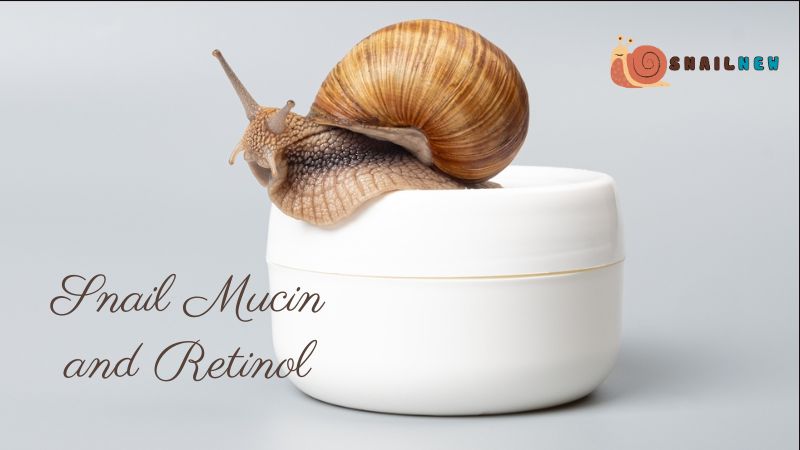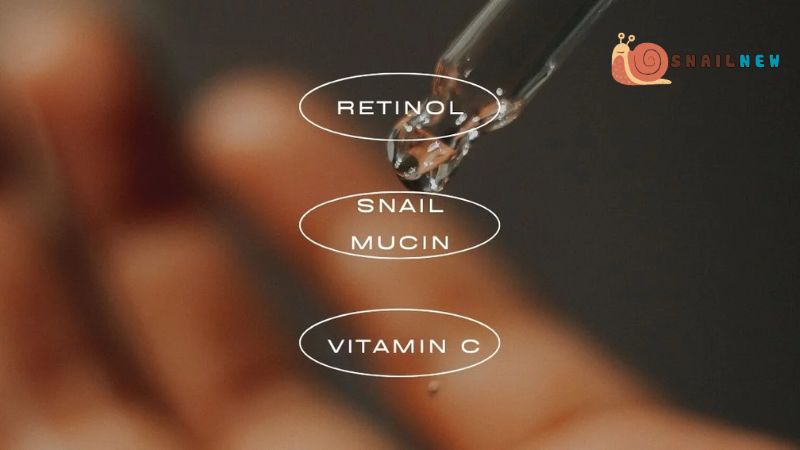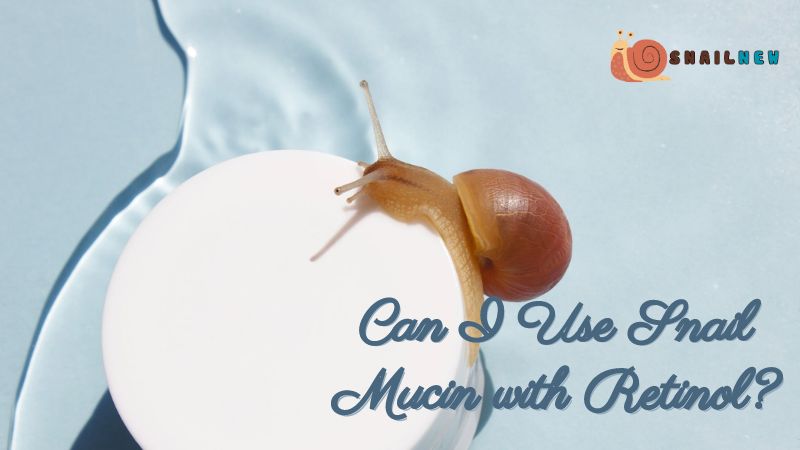In the world of skincare, there are countless ingredients touted for their transformative effects. Among these, snail mucin and retinol stand out as powerhouses in their own right. But can i use snail mucin with retinol? The answer is a resounding yes. However, navigating the integration of these two potent ingredients requires knowledge and care to ensure optimal results without overwhelming your skin. In this comprehensive guide, Snailnew will delve into the benefits, considerations, and best practices for incorporating snail mucin and retinol into your skincare routine.
Table of Contents
ToggleUnderstanding Snail Mucin and Retinol
Before diving into their combined use, let’s explore the individual benefits of snail mucin and retinol.

Snail Mucin: Derived from the secretions of snails, snail mucin is prized for its hydrating, soothing, and reparative properties. Rich in glycoproteins, hyaluronic acid, and peptides, snail mucin helps to moisturize the skin, improve elasticity, and reduce inflammation. Its gentle nature makes it suitable for all skin types, including sensitive and acne-prone skin.
Retinol: Retinol, a derivative of vitamin A, is renowned for its ability to promote cell turnover, stimulate collagen production, and diminish the appearance of fine lines, wrinkles, and hyperpigmentation. It’s a potent ingredient that can address various skincare concerns, including aging, acne, and uneven skin tone. However, retinol can also cause sensitivity, irritation, and dryness, especially when first introduced to the skin.
Can I Use Snail Mucin with Retinol?

Yes, you can use snail mucin with retinol. Combining these two ingredients can offer a synergistic approach to skincare, harnessing the hydrating and soothing properties of snail mucin to counterbalance the potential drying and irritating effects of retinol. However, it’s crucial to proceed with caution and follow best practices to ensure compatibility and efficacy.
Best Practices for Using Snail Mucin with Retinol
- Patch Test: Before incorporating snail mucin and retinol into your skincare routine, perform patch tests separately on a small area of your skin to assess individual tolerance and sensitivity. This step can help you identify any adverse reactions and determine the appropriate concentration and frequency of use for each product.
- Start Slowly: When introducing snail mucin and retinol into your routine, start slowly to allow your skin to acclimate to each ingredient. Begin by using them on alternate nights to minimize the risk of irritation and sensitivity. As your skin becomes accustomed, gradually increase the frequency of use as tolerated.
- Apply in the Right Order: If you’re using both snail mucin and retinol in the same skincare routine, apply retinol first. Retinol has a smaller molecular size, allowing it to penetrate the skin more effectively. Allow the retinol to absorb fully before applying snail mucin to maximize the benefits of both ingredients.
- Moisturize: After applying snail mucin and retinol, follow up with a moisturizer to seal in hydration and further mitigate potential dryness and irritation. Look for a gentle, non-comedogenic moisturizer that complements your skincare routine.
- Sun Protection: Because retinol can increase skin sensitivity to the sun, it’s essential to apply broad-spectrum sunscreen with an SPF of 30 or higher during the day. Sunscreen helps protect your skin from harmful UV rays and prevents photoaging, ensuring the efficacy of your skincare regimen.
- Listen to Your Skin: Pay attention to how your skin responds to the combination of snail mucin and retinol. If you experience redness, irritation, or discomfort, scale back the frequency of use or temporarily discontinue one or both products. Consulting a dermatologist can provide personalized guidance and recommendations based on your skin’s needs.
The Benefits of Using Snail Mucin with Retinol

By incorporating snail mucin with retinol into your skincare routine, you can reap a multitude of benefits:
- Hydration and Moisture Balance: Snail mucin helps to hydrate and replenish the skin’s moisture barrier, counteracting the drying effects of retinol and promoting a plump, supple complexion.
- Soothing and Calming: The soothing properties of snail mucin can help alleviate irritation and redness often associated with retinol use, making it an ideal companion for those with sensitive or reactive skin.
- Enhanced Efficacy: When used together, snail mucin and retinol can enhance each other’s efficacy, addressing multiple skincare concerns simultaneously, such as fine lines, wrinkles, dullness, and uneven texture.
- Reduced Sensitivity: Snail mucin’s gentle nature can help mitigate the potential sensitivity and irritation caused by retinol, allowing for a more comfortable and tolerable skincare experience.
- Overall Skin Health: By promoting hydration, collagen production, and cell turnover, the combination of snail mucin and retinol contributes to overall skin health, resulting in a smoother, more youthful complexion over time.
Conclusion
In conclusion, using snail mucin with retinol can be a game-changer in your skincare routine, offering a harmonious blend of hydration, repair, and rejuvenation. By following best practices, starting slowly, and listening to your skin, you can harness the transformative power of these ingredients without compromising skin health. So, can I use snail mucin with retinol? Absolutely—embrace the synergy and unlock the full potential of your skincare regimen.


